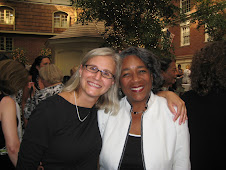KC submitted this English 10 assessment involving thinking maps. Students completed the assessment after reading a selection of short memoirs, letters, and This I Believe essays from National Public Radio. Below is the assessment description in language for students.
Final Assessment
This group activity is designed to help you think about memoir as a genre – the tools the writers’ tend to use, the themes and conflicts that recur, the ways in which characters are drawn. Refer to your notebook as you work on these three tasks. Much of the information you need to complete the activities should be there. You’ll use it to draw further inferences and conclusions about memoir.
Here is a list of the memoirs we’ve read in the order we read them: An excerpt from Black Boy by Richard Wright, “We Are Each Other’s Business” by Eboo Patel, “A Duty to Heal” by Pius Kamau, “Be Cool to the Pizza Dude” by Sarah Adams, “Harper Lee’s Letter to Oprah” by Harper Lee, “I’ll Eat What He’s Wearing” by David Sedaris, excerpts from I Thought My Father Was God by various authors, and “A Perfect Day” by David Benjamin.
Part One: Author’s Style
Product: Double Bubble Map
Directions: Choose two memoirs and compare and contrast their styles. Style includes use of dialogue, descriptive techniques, figurative language, word choice, sentence structure, and tone. The two pieces you choose should have at least two elements in common – the writers use dialogue similarly, for example; or they both use personification. In addition to similarities, identify differences between the pieces on your double bubble map.
Part Two: Characterization
Product: Two Circle Maps
Directions: Choose two additional memoirs (other than the ones you used in Part One) and examine the ways in which authors use indirect characterization. I suggest you use the David Sedaris piece and one of the I Thought My Father Was God pieces, as you already have notes on characterization for these. In the center of each circle map, put the name of a main character from the memoir. In the inner circle, write characteristics of that person. For instance, if I were writing about the kid in “A Perfect Day,” I might include “incompetent” as one of his characteristics. In the outer circle, provide the specific examples (quotes are best) from the text that led you to identify the character as you did.
Part Three: Conflict
Product: Multi-Flow Map
Directions: Choose two more memoirs (other than the ones you have used already) and identify a common conflict that the characters face. Put the conflict in the center of the map. On the left, identify the common causes of that conflict in the characters’ lives. On the right, identify the common effects of the conflict. Be specific! You must have at least four causes and four effects. If you’d like to include causes and effects that one memoir has and the other doesn’t, be sure to make it clear which piece you’re discussing.
Sunday, October 7, 2007
Thinking Maps and Memoir
Labels:
circle map,
cognition,
double bubble,
multi-flow,
reading,
thinking maps
Subscribe to:
Post Comments (Atom)







No comments:
Post a Comment